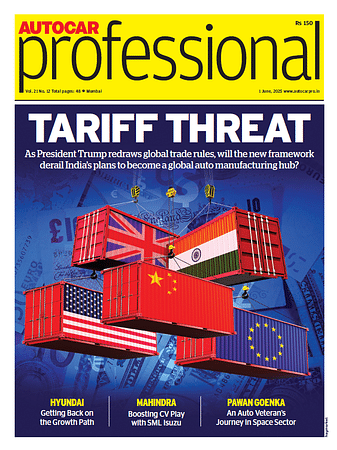GST disparity: why EV battery costs continue to slow down adoption
Reduction in GST rates on batteries can have a significant impact in fostering innovation among domestic OEMs.
Recent reports have forecast electric vehicle penetration in India to grow from 1% in 2023 to 10-15% in 2030. This projected growth can be attributed not only to the heightened consumer awareness around sustainable transportation but also to pivotal policy changes and government backing. For example, in 2019, India saw a remarkable surge in EV adoption when the government reduced the GST on EVs from 12% to 5%. This policy shift resulted in a booming EV market, with Original Equipment Manufacturers (OEMs) and new startups rushing to seize the opportunity. EV sales surged by 20%, and by 2023, over a million EVs had been sold in just nine months, showcasing the positive impact of the policy.
Hurdles in EV penetration
However, there remains a substantial gap in achieving the 30% EV penetration in new vehicle registrations by 2030. To fully tap into this $ 200 billion EV market potential, it is imperative to address the challenges that hinder widespread EV adoption. One significant issue is the disparity in GST rates, with lithium-ion batteries taxed at 18% while built-up EVs are taxed at a lower rate of 5%. This inequality needs to be addressed immediately to ensure increased growth and adoption in the EV sector.
Equalising tax rates
Equalising the tax rates offers many advantages by providing a strong incentive for manufacturers to cut costs, resulting in increased affordability and a higher rate of EV adoption. The high recurring expenses associated with replacing batteries every 3-4 years in most light EVs often discourage potential buyers from making the switch to electric vehicles. These frequent battery replacements substantially inflate the total ownership costs, sometimes overshadowing the potential savings stemming from reduced fuel consumption and maintenance. Thus, to expedite widespread EV adoption, it becomes paramount to swiftly implement targeted cost-reduction strategies.
How GST reduction on batteries can foster innovation
Additionally, a reduction in GST rates on batteries can have a significant impact on fostering innovation among domestic OEMs. This move would alleviate working capital challenges for early-to-mid-stage EV startups, who currently face the predicament of acquiring batteries at an 18% GST rate while selling them as part of an EV at a reduced 5% GST rate. Lowering the GST rate will lead to greater innovation for India, as it will promote a product-focused approach, rather than a price-focused one.
A reduced GST would also provide a significant boost to the burgeoning battery-swapping industry in India. Battery swapping has garnered popularity among two and three-wheeler users, delivery fleets, and gig workers seeking efficient and cost-effective alternatives to battery ownership, maintenance, and replacement. However, the higher GST on standalone EV batteries serves as a roadblock to the expansion of battery-swapping infrastructure in the country.
In April 2022, the rationalisation of GST rates was proposed as part of NITI Aayog’s Draft Battery Swapping Policy. Discussions ensued among policy and industry bodies regarding lowering the tax rates on lithium-ion batteries for electric vehicle use. However, in October 2023, the GST Council rejected a blanket reduction of GST rates on all lithium-ion batteries, due to their widespread use in cellphones, power tools, digital cameras, small and large appliances, tablets, and storage systems.
One effective strategy to address this concern is the targeted reduction of GST rates exclusively for lithium-ion batteries utilised in EVs. A great example of this strategy comes from the Ministry of Petroleum and Natural Gas, which lowered the GST rate on ethanol used for blending with petrol to 5% while maintaining the 18% rate on ethanol used for other purposes. This precise and strategic approach has the potential to invigorate the EV sector without affecting other product categories reliant on lithium-ion batteries.
Reducing the GST rate would not only spur the adoption of electric mobility but also increase acceptance of lithium-ion batteries (over their lead-acid counterparts), enabling the Indian EV industry to effectively compete on the global stage. Incentivising manufacturers with lower rates will promote domestic battery production – a crucial element in realising India's ambitious net-zero emission targets. FY23’s substantial import expenditure of over Rs 23,171 crore for lithium-ion serves as a compelling reminder of the immense opportunity to leverage this sector, thereby aligning with the overarching vision of the Make in India initiative.
Pulkit Khurana is the co-founder of Battery Smart. Views expressed are those of the author.
RELATED ARTICLES
The Growth of the Second-hand/Refurbished Bike Market in India
As rising costs and changing mindsets reshape mobility, India’s used two-wheeler market is gaining momentum—driven by af...
Opinion: How will KTM Change After the Bajaj Takeover?
Now that we know KTM has been saved, the question is what its future identity will be.
Why Leasing Dominates India’s Commercial EV Market
Leasing dominates India's commercial EV sector as fleet operators seek to mitigate high upfront costs, battery uncertain...





 18 Nov 2023
18 Nov 2023
 13855 Views
13855 Views





 Sarthak Mahajan
Sarthak Mahajan


 Autocar India
Autocar India


